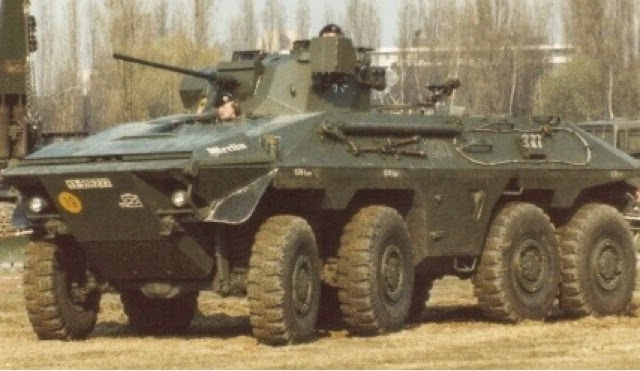For several decades, all West German military vehicles were painted in overall Gelboliv (RAL 6014), which is a fairly dark brownish olive green when the paint is new:
And it slowly fades to a greenish khaki:
What color to use as a base coat is easy, as Model Masters produces RAL 6014, which they call "Gelboliv", of course. Beginning in 1983-84, the West Germans started moving to NATO tri-color camouflage, the switch-over not being complete until about 1986-87. As my scenario is set in March 1981, I don't need to bother with that.
Therefore, painting is pretty hassle-free. Two coats of Gelboliv to provide good coverage, then a black wash, to both deepen shadows and provide a coat of "grime". I blacken any gun barrel flanges, then I apply the necessary coat of "mud" to the lower vehicle and drybrush with Vallejo Khaki Grey (880). "Bling" is then added in the form of headlights, license plates (white in this case), and a yellow bridge weight notice. Gunmetal grey on any visible small weapons. That's all there is to it.
For infantry, prior to 1990, the official uniform color was olive green, but this was renown for fading very quickly to a green that had a vague bluish tint.
After a bit of experimentation, I settled on Model Masters Dunkelbraun. That translates into English as "dark brown", but it isn't even remotely brown. It's a slightly blueish sage green color, so problem solved.
So, let's get painting!!



No comments:
Post a Comment